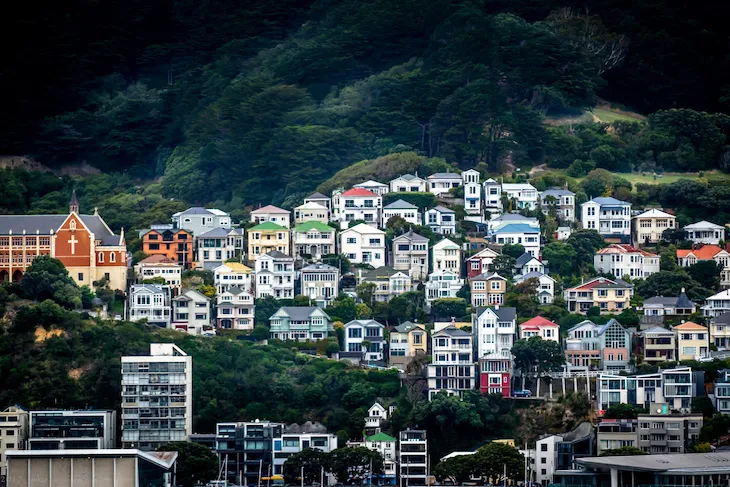The government of New Zealand this week tightened the country’s working visa rules in order to stem historically high numbers of international migrants making their way to the South Seas.
New Zealand’s infrastructure seems to be groaning in response to the surging number of international newcomers
Immigration minister Erica Stanford said that the changes will allow businesses to make greater use of local workers while still attracting high-skill migrants where there are skill shortages. “Getting our immigration settings right is critical to this government’s plan to rebuild the economy,” she says.
The new rules have also been billed as protecting migrants from exploitation. But at least part of the political story is about the way New Zealand’s infrastructure seems to be groaning in response to the surging number of international newcomers since the end of the country’s famously severe Covid restrictions.
On almost any given year up until 2020, New Zealand comfortably processed around 120,000 migrant arrivals, including thousands of younger Brits taking advantage of a working holiday scheme that allows thousands from both places to live and work in either country. In the wake of a new trade deal between the countries, the period covered by the scheme increased to three years and the age of eligibility put up to thirty-five.
In the year to last June, however, the number of migrants of all stripes nearly doubled to almost 200,000. This in a nation of just 5.1 million souls.
Much of this surge is to do with the abrupt easing of draconian restrictions introduced during the pandemic. Flush with the conceit that Covid could yet be kept at permanent bay on the watch of former prime minister Jacinda Ardern, the country slammed shut its maritime borders in 2020.
While the raising of the drawbridge hardly put paid to the virus over the long-term, it did halt the annual stream of foreign workers upon which New Zealand increasingly relies. The restrictions soon led to unprecedented labor shortages and very low unemployment.
A massive volte-face by Ardern’s administration followed. The last Labour government ended its term in parliamentary office by pulling out all the policy stops to entice international workers back to the South Seas.
Now the new conservative coalition government of Christopher Luxon, which took office just before Christmas, feels its predecessor’s pitch has been bit too successful. As the immigration minister said this week, the new imperative will be for resident Kiwis to be “put to the front of the line for jobs where there are no skills shortages.”
But that’s not the only line political leaders are worried about. An ever-growing line of locals looking for property also has to be kept in mind. This is difficult enough to politically manage at the best of times, the last thing political leaders want or need is a limitless flood of new arrivals fanning inflation and re-heating a property market that burned white-hot in the late 2010s.
Only in the past eighteen months or so has New Zealand housing market fully lost its dubious reputation for leaving pretty much every other comparable nation in the shade.
There are diplomatic considerations as well. New Zealand, an export-led nation, lives or dies by negotiating free-trade agreements for getting its primary products into the globally lucrative markets of North America, East Asia and Europe. Typically, these deals involve — or at any rate encourage — additional political sweeteners such as improved migrant-access provisions of the sort Brits can now take advantage of.
Until Britain’s accession to the old EEC in 1973, trading frozen meat and dairy products with the UK was the cornerstone of the New Zealand economy. And economic migrants from the much-romanticized “old country” have long enjoyed a special welcome mat, too, in a land where one in every twenty residents is still British-born.
Speaking of which — in English, that is — language has also been highlighted as a related problem. The new government now says it will be more rigorous in requiring greater levels of English proficiency from applicants for the three-year-long temporary work visa that was introduced at the tail end of Covid. Not surprisingly, the left-leaning opposition, in particular the Green Party, has seized upon this as a particularly egregious case of “dog-whistle politics” against non-Anglophones.
It may be that yet another policy tweak of some sort is ultimately needed in the coming year or so. In the meantime, would-be migrants from the old country should continue to check their visa privilege.
This article was originally published on The Spectator’s UK website.


























Leave a Reply